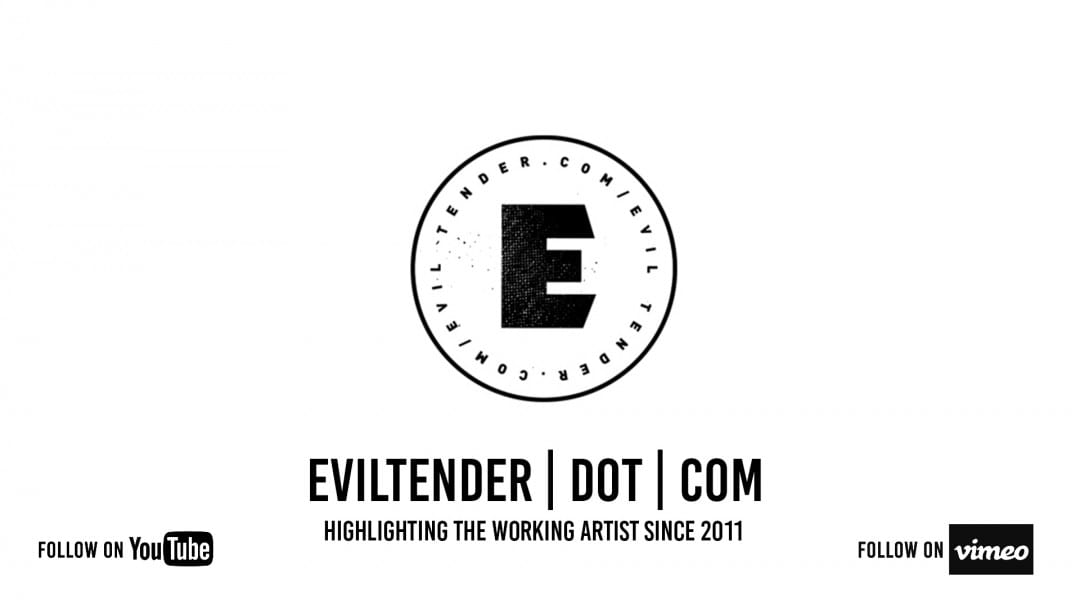
Model Anna Lisa Wagner is a perfect beauty — an archetype of feminine grace and charisma. Channeling the classic supermodel of the ’90s, Wagner stands as a modern American goddess. The art is to be present, in true collaboration with the photographer. The former Penthouse Pet has amassed a large fanbase and gives as much attention and effort to the business of modeling as she does the art of modeling. Behind the camera, her art takes another path, one of exploration and improvisation.
Wagner shoots on film and leans into the imperfections of the medium. Two snaps of the same subject can be drastically different — a movement of the sun, an oddity in the chemical reaction during development. The Polaroid is instant and the process tangible, eventually the image will fade, lost to time.
Wagner’s main subject is herself self and in her self-portraits, she transforms and breakdown her body into plateaus, ridges, dunes — the language of earthly descriptors. Sometimes highly sexual and others devoutly exploratory, Wagner is not concerned with beauty or the feigned poses of selfies. She works to become part of the photograph. One look at her ‘Deep in the Dark‘ series of self-portraits and you will see this concept fully realized. Wanger poses against a blank wall, a space of minimal light. The camera soaks in as much of the light as it can and the final result is full-grain, her body rendered in variations of gray. She is present, but the realities of her features are lost within the physical photograph. The beauty is not just her anymore, but the light and the acid, the layers of plastic, and the shape of the world captured.

‘Deep in the Dark’ self-portrait by Anna Lisa Wagner
CJ: I found your work through Alex Wilkerson, who has shot you quite a bit. What struck me about your modeling work is the classic feel of it all. Your aesthetic reminds me of illustrator Robert McGinnis’s work, who did the original James Bond book covers. You’re a living Bond girl from his paintings. The sexuality is wrapped in sophistication and intelligence. Do you treat your modeling as an expression of who you are, your genuine-self, or is it more of a chance to play a character?
ALW: Alex and I are wonderful friends. We shoot together as often as we can. We also have a lot of respect for each other and the work that we do, so it makes it easy to be 100% on board when a new idea or concept is presented by either of us. I just watched Goldfinger the other night – my favorite Bond movie. Pussy Galore is just everything I love in a woman. Self-assured and powerful, yet bound to her emotions and need for love. I believe those themes are rather prevalent in my work, as well.
There is a bit of character development that goes on in pre-production, which I usually discuss with the photographer (i.e. styling, conceptualization, technicals, etc), but most of that I bring in on my own the day of. I have a pretty well-established brand so many photographers I work with expect and welcome that.
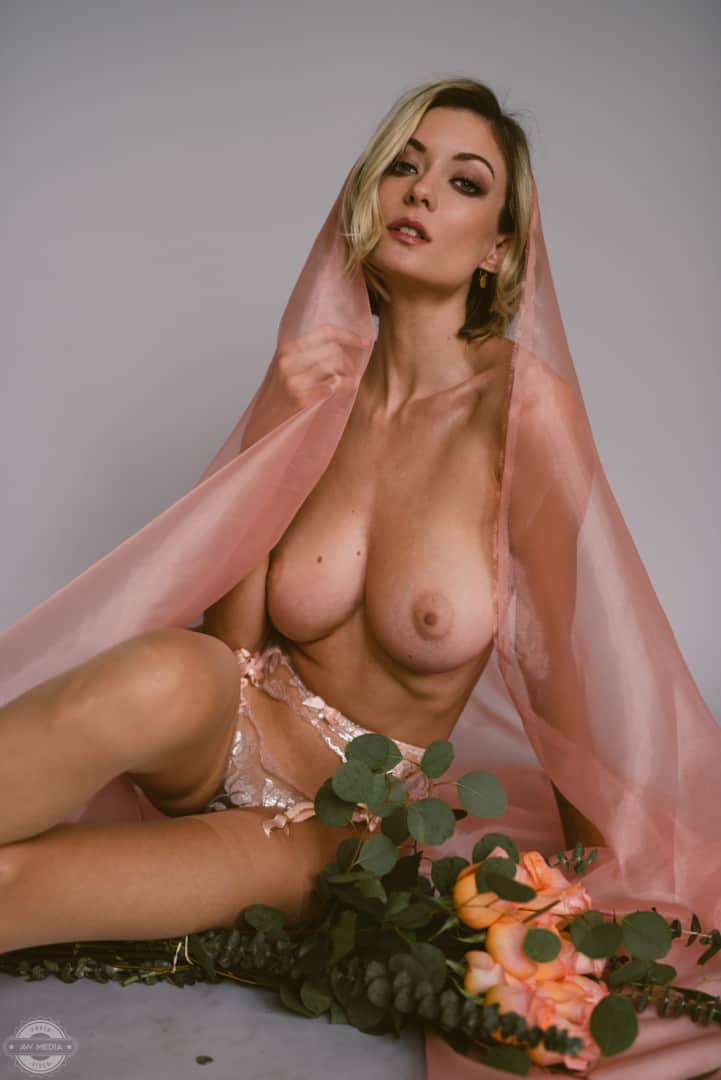
Photo of Anna Lisa Wagner by Alex Wilkerson
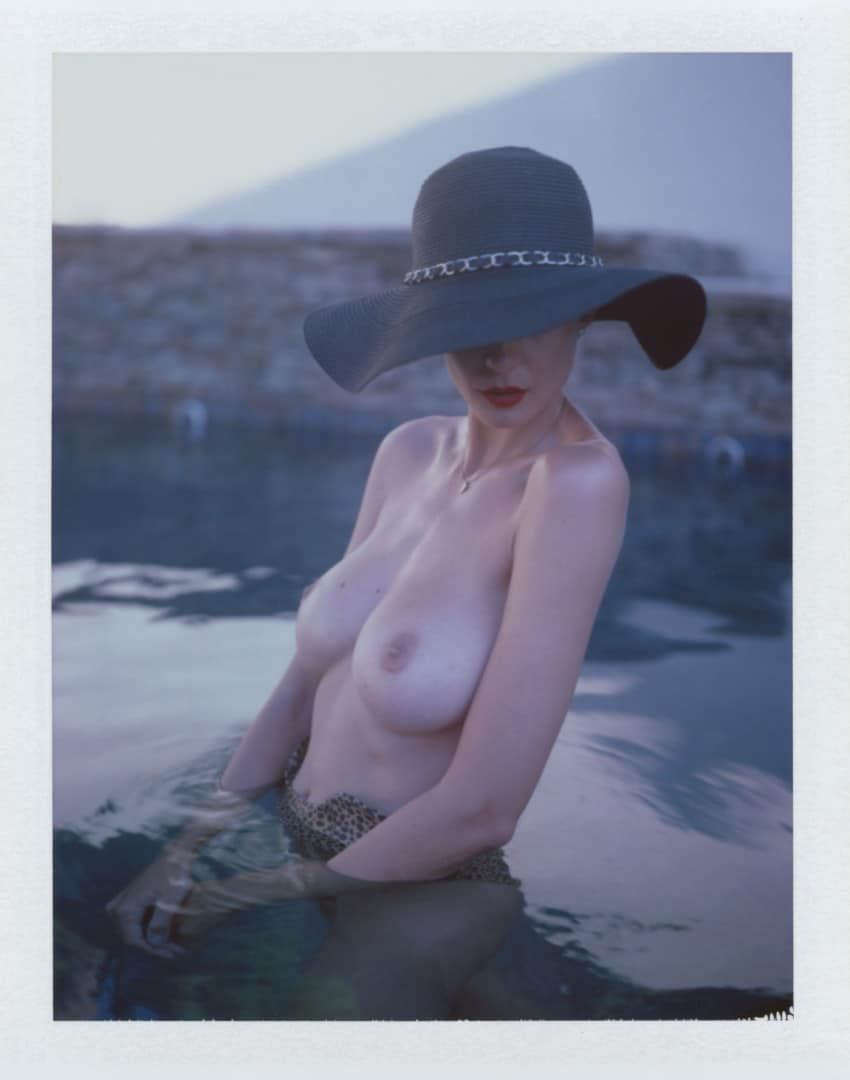
Polaroid photoographt of Anna Lisa Wagner by Alex Wilkerson
The series you shot with Alex in the pool and your big floppy hat has an immediacy to it – they are stunning and totally unforgettable. There’s a Helmut Newton feel to them, a throwback to the ‘90s supermodel era of Cindy Crawford, Naomi Campbell, Linda Evangelista and the like. The light and shadow, the shapes created are so perfect. Can you force a great shoot to happen? Is there a “magic” combination of elements that go into making a shoot like this one so special?
Oh my goodness, you rattled off some superstars there. I’m flattered to even be mentioned amongst them.
The pool shoot was an amalgamation of my experience as a model/creative director/stylist/make up artist, Alex’s technical expertise as a photographer, a beautiful sunny day in LA, some good weed, and few mimosas. Alex had been shooting with another model that afternoon while I was relaxing by the pool and pulling this look together. The Newton feel you mentioned tends to happen to me a lot, often by accident. I just love that classic, timeless look — it translates so well over film. We shot one of my favorite FPs (peel-apart instant film) that afternoon. It was listed in my online shop up until recently, as an artist bought it to hang in his studio.
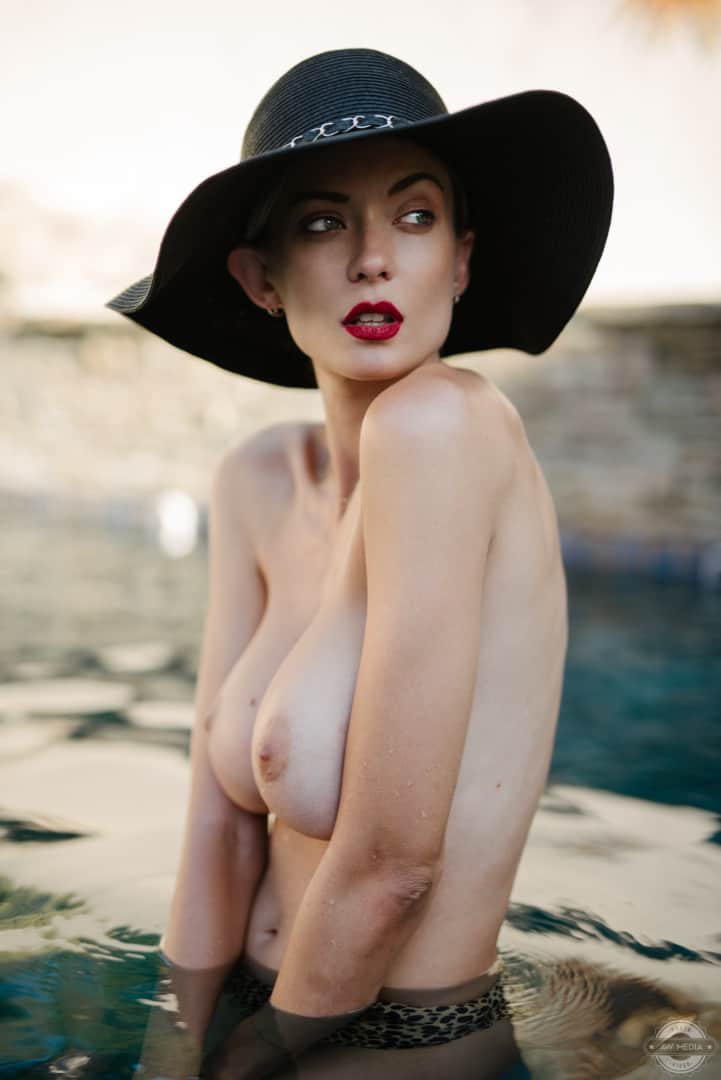
Photo of Anna Lisa Wagner by Alex Wilkerson
For solitary-based artists, if a painting or a drawing isn’t going well the artist can always abandon the work midway and start again. As the model, if you feel a shoot is going poorly do you trust the photographer to say the work is done or do you step in? Do you see yourself as solely the subject of the art, or a voice in the final piece?
I tend to work best in an environment where I can genuinely connect and see eye-to-eye with the photographer and their vision. No matter how you look at it, a photoshoot is a creative partnership between the photographer and the model. Sometimes photographers are willing and open to me and my ideas. Sometimes they have a clear direction of what they want and I’m there to fulfill that role. In any case, there’s a natural ebb and flow to the energy given and received on set. If something is off, it’s usually easily picked up on and communicated. I’m extremely professional when it comes to my work and respect goes a long way with me.

Photo of Anna Lisa Wagner by Baldwinner
You seem so clear in your poses. Are you constantly aware of how you appear from head to toe during each photoshoot? Can you imagine the final image as you pose or is there a level of surprise when you see the final images?
Modeling takes practice, especially if you’ve had a hard time connecting to or listening to your body. You have to be aware of how your body moves and feels as you’re posing, as well as how you’re breathing. If you’ve taken a yoga class, you’ve already had some practice with this. It’s important to breathe and move through tough poses – don’t lock your knees either (many do this unintentionally and faint onset).
It also helps to flip through fashion magazines and practice in front of the mirror so that you become familiar with how your body feels in certain poses. Then you can replicate them on set. In my experience, knowing a bit about photography (i.e. framing, lighting, and composition) helps immensely, as well. It never hurts to ask the photographer how he’s framing a certain shot or to see the photos as you’re shooting them.
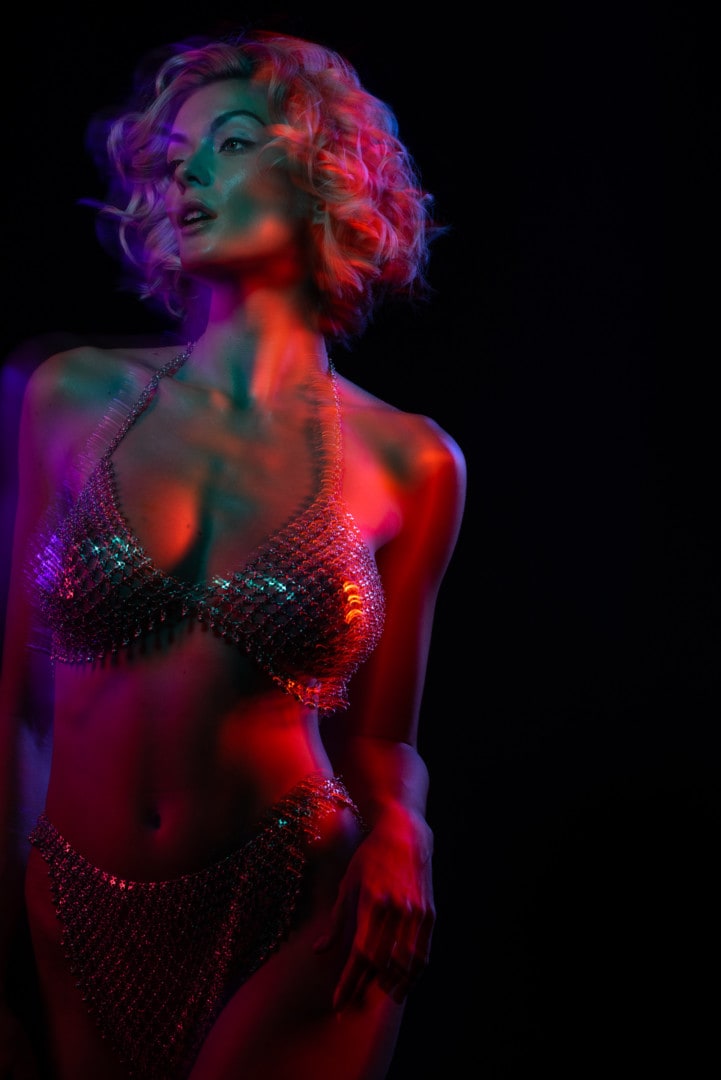
Photo of Anna Lisa Wagner by Tim Engle

Photo of Anna Lisa Wagner by Baldwinner
There is such a consistent voice to your work, even between all of the various photographers you work with. There is a style to what you do that gets amplified in different ways. Knowing that you won’t see the images until after the shoot, how do you decide who to trust behind the camera? What is the process prior to a shoot?
I have an extremely strict vetting process when it comes to new photographers. I don’t typically shoot with new people, only friends and those recommended to me by people I trust. Even so, I’m still quite particular so I don’t stray too far out of my circle of tried-and-true.
Here are some things I take into account when vetting someone new:
— Are they professional and respectful when communicating with me? Do they ask for my rates? Do they respect said rates (no haggling)?
— What are they offering that’s of value to me? Is their work interesting to me? Is it unique? Will it elevate my brand? Can I use this content to promote myself better?
–Do they have a large social media network? Can I capitalize off of their following by networking with them? What’s their etiquette like on social media? Do they respect their models through the imagery and commentary on their feed?

‘Annalise and Ben’ shot on 35mm film by Anna Lisa Wagner
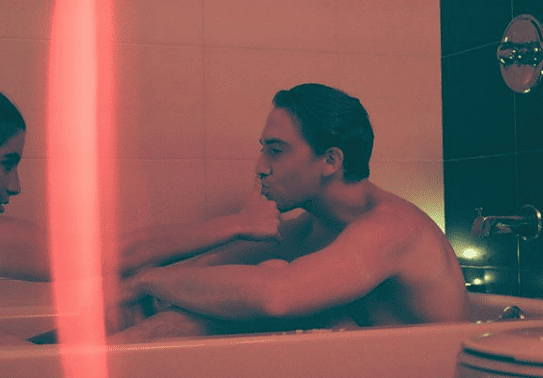
‘Daniela and Zach’ shot on 35mm film by Anna Lisa Wagner
Outside of being a model, you are also a fantastic photographer. Your photographs tend to focus on intimacy, couples alone. Private moments, which is different than your work as a model, where you are mostly photographed solo. What draws you to the inner lives of couples? Was it a natural space for you to create art from?
I’ve always been drawn to couples and the individual bonds and behavior patterns that bring them together. Every couple is a different amalgamation of trauma, attachment styles, conditioning, and a whole load of other stuff. It’s wonderful to see how couples work together, and separately, to overcome these very personal aspects of themselves in order to love one another. I’m lucky to have some wonderful friends who trust me enough to allow me to share their most intimate moments with them. Creating intimacy and trust is crucial, so expectations and consent are always communicated beforehand.
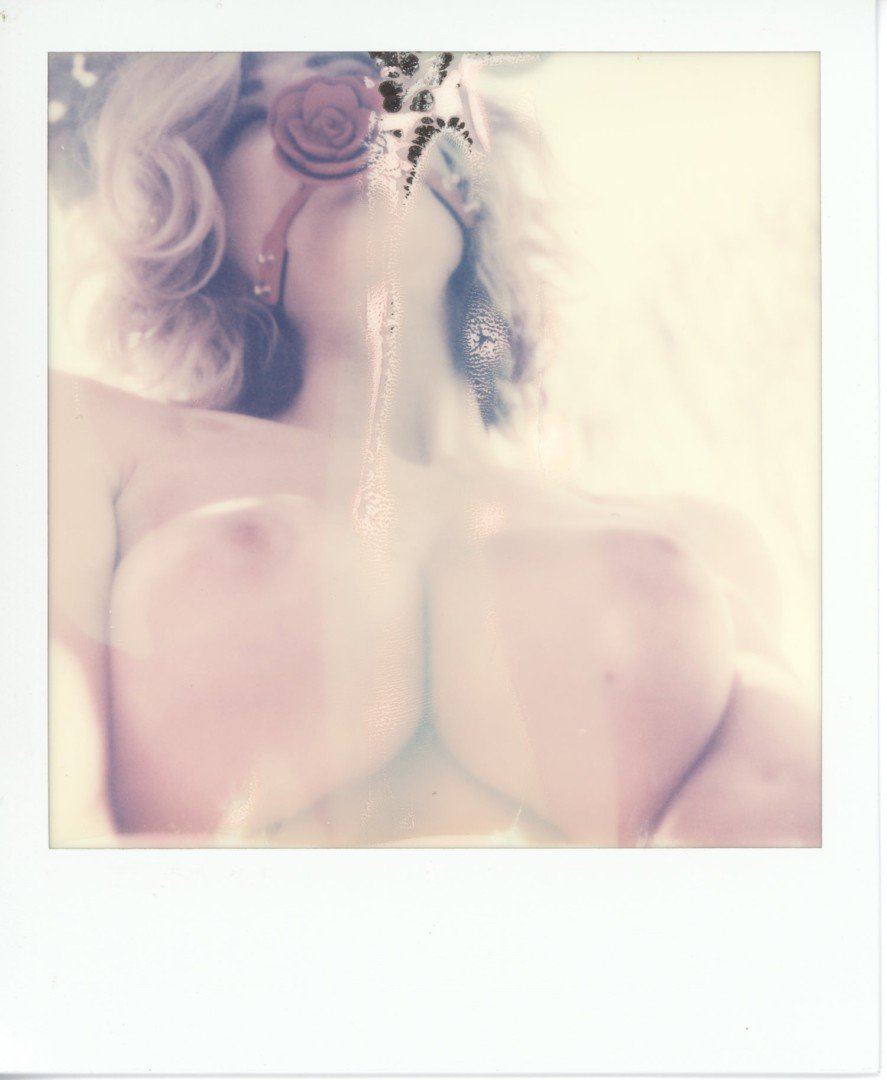
‘Lady Rose’ self-portrait by Anna Lisa Wagner
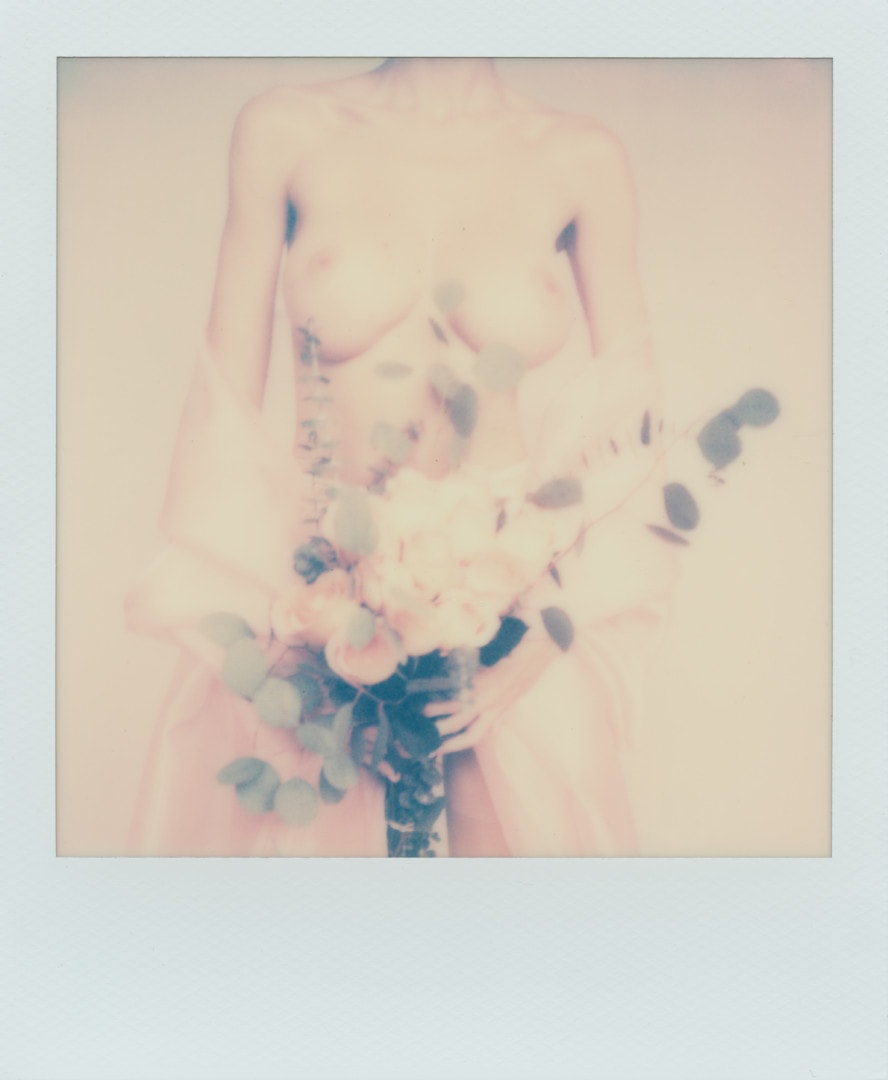
Photo of Anna Lisa Wagner by Alex Wilkerson
The bulk of your own photography appears to be on film, and you are often shot on analog equipment. I love the way the Polaroids come out because you never know what will happen between shooting and developing. Part of the aesthetic of film is in the imperfections, the inability to fully know what you captured in that moment. It’s interesting to see a photo of you – who is by herself a thing of beauty – with these artifacts of fractured light and chemical residue of the film itself. Do you see yourself as anti-digital or do you just prefer film? What does the analog bring to your creative experience?
Film is definitely my preference, exactly for the reasons you mentioned. There’s a freedom in surrendering to the medium and just letting it be. But it also forces you to be more present, to really focus on framing, composition, setting, and lighting. It’s intentional. And sometimes that’s all the difference in making a good image, a great one.
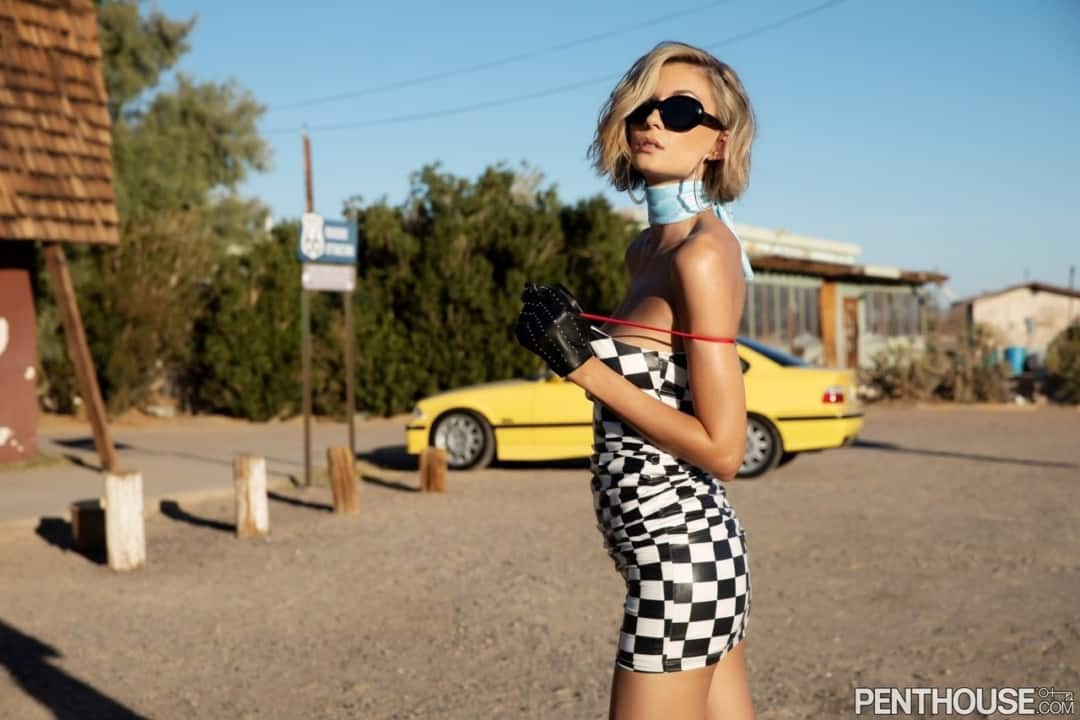
Anna Lisa Wagner in the February 2019 issue of Penthouse | photo by Suss Oldman
The photos from your Pet of the Month in Penthouse are quite different than your usual work. The mood is different, yet you are as bold and strong as ever. How did that job come about? Did that shoot have art different direction that your usual art shoots?
The opportunity to shoot for Penthouse came shortly before Thanksgiving of 2018. A friend of mine who shoots for the publication reached out to me to see if I would be interested in being the first non-adult performer to be featured in the magazine. I had always wanted to be published in a nationally recognized publication so after giving myself a few days to think it over, I decided to go for it. The entire team involved was amazing and we had a great time shooting/racing down Route 66 that day. The cover placement and Pet of the Month title came as a surprise a few weeks later when the editor called me to finalize some things before the story was okayed for print.
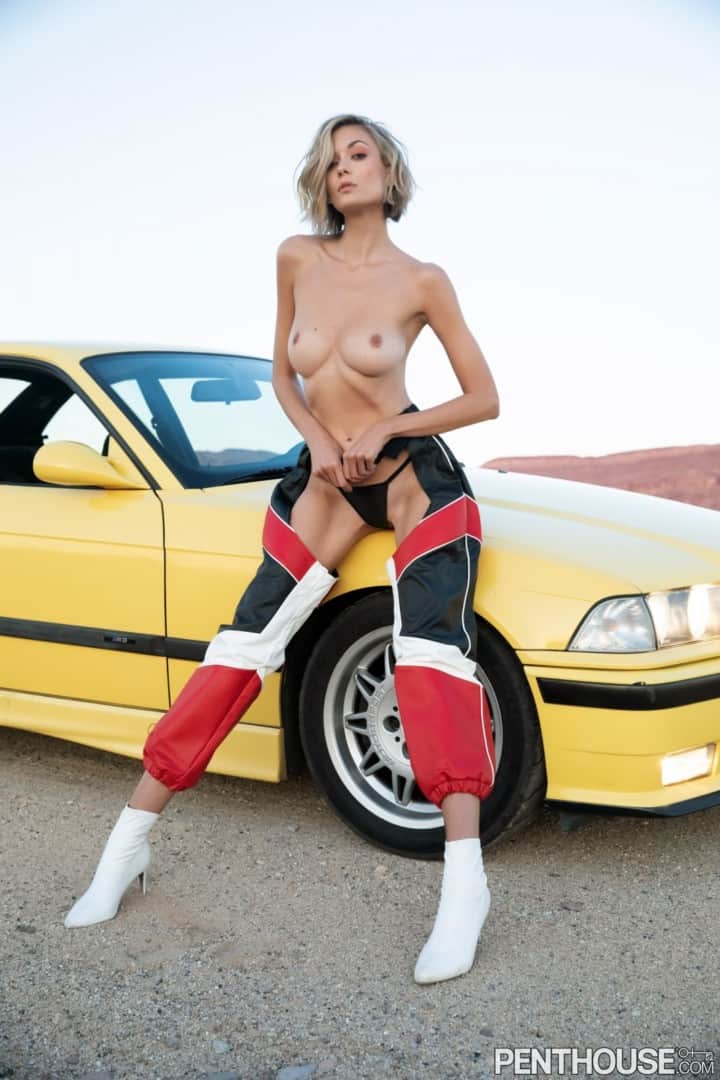
Anna Lisa Wagner in the February 2019 issue of Penthouse | photo by Suss Oldman

Anna Lisa Wagner in the February 2019 issue of Penthouse | photo by Suss Oldman
You mentioned your Penthouse interview that you painted, or at least did as a child — are you still painting? Do you see a relationship between your painting and your modeling work, or work as a photographer?
I started painting when I was 6yrs old. I begged my mom to let me join an art class that we happened to walk past one afternoon. The teacher said I was too young, but my mom convinced her to let me in any way. We started with watercolor and then moved on to oils a year or two later. I really enjoyed it and I had a knack for it. Modeling started a few years later, I was signed to my first agency at 15.
I transitioned from painting to photography shortly after that, shooting mostly friends and bands from my high school. My parents divorced around that time so my creative energy when it came to painting got lost at that point. I haven’t tried to pick it up since, but I’m working on that (I’m currently reading a book called The Artist’s Way by Julia Cameron).
I’ve found that everything in my life is connected by these tiny little creative fibers. They’re present in everything that I do, so much so that I get flustered and upset when I’m not creating in some capacity. The more creatively blocked I feel, the more work I need to do to nourish my inner artist. As I get older, this becomes more and more apparent.
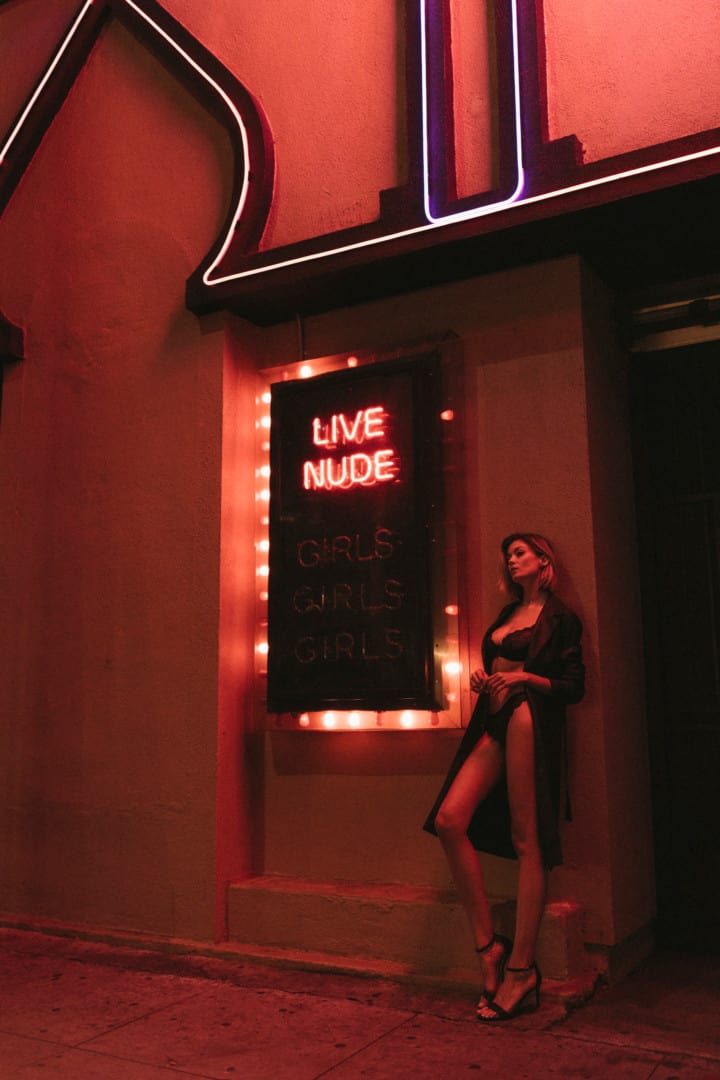
Photo of Anna Lisa Wagner by Julia Mayorova

‘Fin De Siècle’ by Xinxin Zhang
It’s great to see artists such as yourself having control over your own career via tools like Patreon, OnlyFans, Instagram, Big Cartel, and the like. Is the bulk of your paid work coming from those outlets or is there still a need for going out and networking face to face with potential clients?
Social networking platforms, membership sites, and online stores have definitely given the power back to creatives in terms of how we make our money and when we get paid. Especially now, given our current state of affairs with this pandemic. But many of my clients have already been using social media as a casting tool, so marketing on these platforms is crucial.
In your store are a collection of Polaroids and a handful of prints. How do you decide which photographs to offer as prints?
Prints are very, very tricky to sell, especially online. Not because the demand isn’t there, but simply because you miss out on the psychology behind viewing it in person. There’s something so moving about seeing a print in a gallery/showcase setting that just doesn’t translate to an online store. So I’m quite particular about which shots become prints. There usually has to be a pretty high demand from my buyers in order for me to consider it.
With the push of content across the social media landscape, there is a huge chance of an artist getting bogged down by the demand and pressure of the digital world. How do you balance doing what you want creatively with the supposed expectations of the invisible audience?
That’s the struggle of the modern-day creative — balancing the work that feeds you creatively with the work that literally feeds you. For me, this looks like a very basic routine with some room left for spontaneity. This is true for my creative process as well, my preferred structure of my daily life. It’s important for me to hit my marks in terms of marketing/ sales/business so that I can continue to resource my more artistic and creative projects for my mental health and well-being as an artist.

Photo of Anna Lisa Wagner by Victor Von
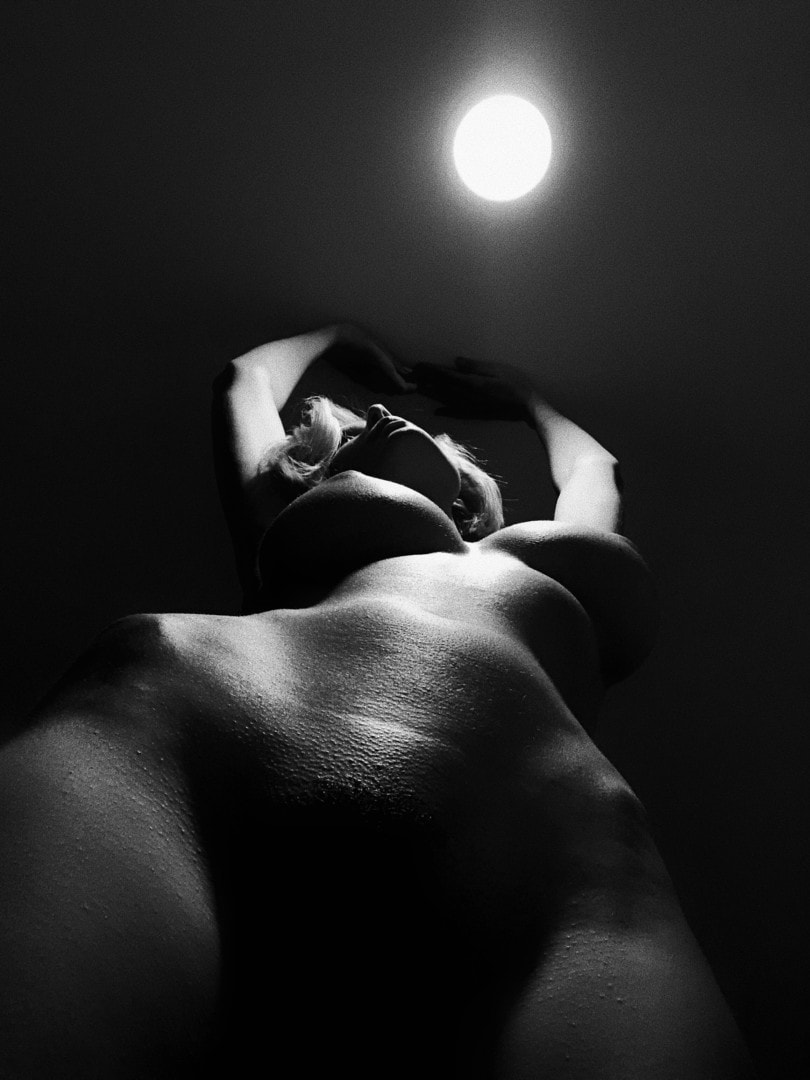
self-portrait by Anna Lisa Wagner

self-portrait by Anna Lisa Wagner
Thinking about the classic supermodels and the era in which they thrived, they didn’t have the same DIY resources that are available now. It was only agents and agencies, big clients, that moved their careers forward and made them money. There were no indie models. Now, you don’t need to be in a magazine and work your way up the traditional way to create work as a model. It’s been bands, writers, and traditional visual artists that benefited through the likes of the early online platforms like Blogspot, Behance, and Bandcamp, but a new crop of models and photographers have bloomed since the time of Tumblr and those similar platforms. It’s exciting to see people that WANT to be models and photographs taking the reigns of their own art and career and doing it their own way. It’s a very punk rock way of creating. As an artist, do you feel that you are thriving in this new environment? Are models able to move from a DIY online career into a more traditional modeling career, or is that even desired?
As with every industry, there are levels to the game and it really depends on what your intention is. With the rise of social media, a lot of things have changed, including the parameters of what we accept as “normal” and “beautiful.”
Looking at it from an agency’s standpoint, there’s a much larger pool of models available to choose from. These days, they’re looking for more than just a pretty face — if you have a following, you’ve become even more valuable to them. From a modeling perspective, that means more visibility and acceptance, especially if you’re a POC [person of color] or part of the LGBTQ [ lesbian, gay, bisexual, trans, queer] community. It’s also brought a voice to the sex worker community, which has been intrinsically intertwined with the artistic community throughout history.
As for me, I appreciate the freedom and personal agency social media has offered me. Of course, there are downsides to it, as there are with everything, but I’m quite happy being in control of how I run things. It’s led to a more peaceful and fulfilling business for me.
So at this point modeling and photography your main job?
Yes. I’m fortunate enough to be able to sustain myself off of my work, but it did take a lot of research, dedication, and perseverance to get where I am today. I’m constantly working and re-working myself and my brand to be the best that it can be. It gets tough sometimes, but it’s extremely rewarding work. I wouldn’t have it any other way.

self-portrait by Anna Lisa Wagner

self-portrait by Anna Lisa Wagner
I’ve only recently started being a patron on Patreon to various artists. It feels good to give directly to artists for their work. I don’t know much about OnlyFans, what sort of content do you share there? Different than Patreon?
I’d say Patreon is geared more towards the art/creative community. I use it as an archive for the bulk of my modeling work, as well as my self-portraits series, film work, and polaroids. If you want to see what it is that I love to do, signing up for my Patreon is definitely the best place to do that (all without censorship – yay!) I like to use OnlyFans as a billing service for my Snapchat, as well as a social platform to connect with me. It’s more fun and relaxed, and you have the ability to message/talk with me.

Photo of Anna Lisa Wagner by Ellis Au
You live in Arizona but ended up in Sacramento for the quarantine? How did that happen?
Sacramento is where my partner lives and works. Due to my almost constant travel schedule, this is the longest time we’ve spent together. So it’s been a really lovely experience with lots of ups and downs, of course. I’ve also taken this time to really dive into some personal trauma work, so I’m grateful to have someone close to me who is supportive and understanding of that process.
I was born in Germany, actually. My father is German, my mother is Yugoslavian. We moved to Arizona when I was about a year old, my grandfather (my mom’s dad) lived in Phoenix. I grew up in the desert and it’s always felt like home, even more so when I left to start modeling abroad. There’s something special about the light there. I’ve never seen anything like it anywhere else.
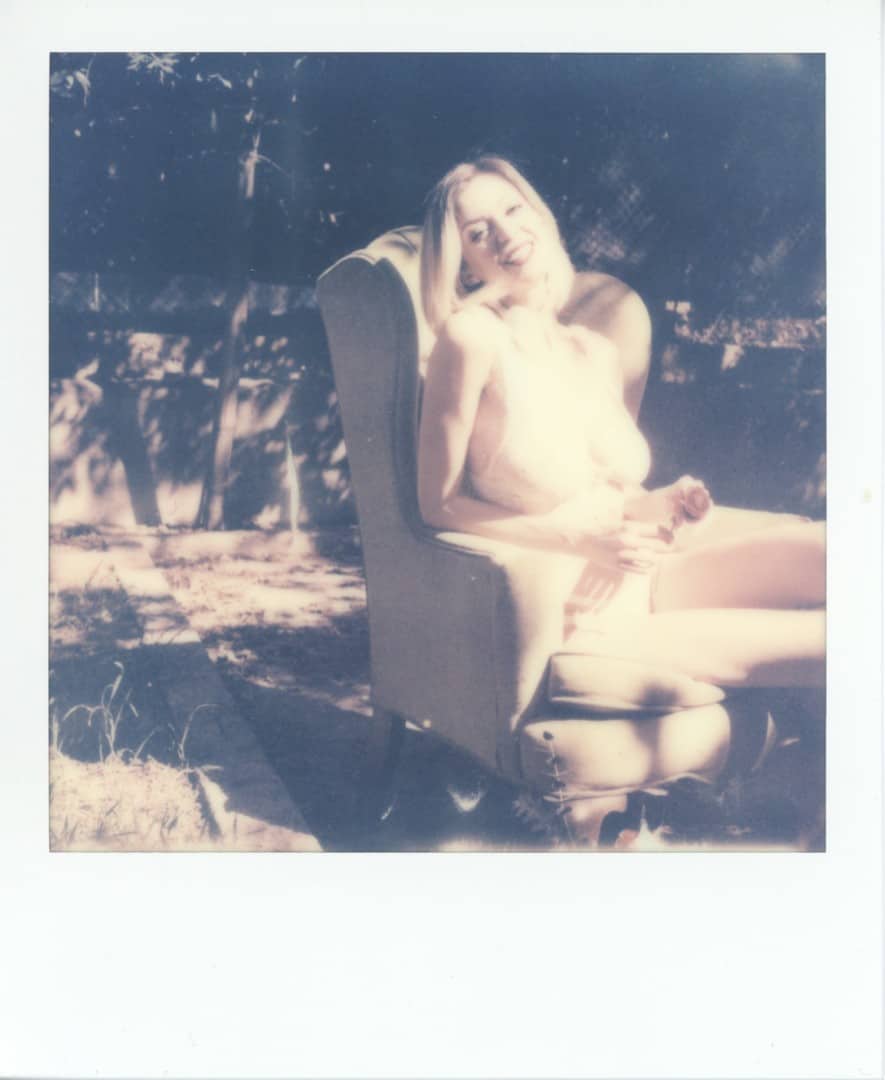
‘Spring Deep 6’ Polaroid photograph of Anna Lisa Wagner
Spring Deep 06 is the only image I’ve seen of you smiling. It’s an honest laugh, a true smile. Seeing it is a bit of a shock. The only image of you in that position. Is it a decision on your part to not show that? Smiling and laughing?
I tend to gravitate more towards striking and powerful images of myself, at least for branding purposes. I’m also a bit self-conscious of my crooked teeth so I’m sure that plays into why I don’t smile often in photos. The particular polaroid you’re referencing was shot by my partner. I had asked him to get two wide shots of me and he unintentionally made me laugh just as he clicked the shutter. It’s an in-between moment, which sometimes turns out to be the best ones. I added it to my shop because it ended up being his favorite shot of that set.

self-portrait by Anna Lisa Wagner
Not sure if you know photographer Allan Amato, but I have a few of his books and in the book Slip there are short essays by his subjects. They’re all people that get naked and photographed for a living, from adult performers to art models. Reading through it a few things struck me — one, getting photographed in the nude gives quite a few people strength and confidence and two, the nature of being a “naked figure” and being objectified can have a positive outlook. Some of the models acknowledged that objectification and understood their role if they were there to inspire other artists in creating their own work. What is nudity to you, specifically nudity on camera?
My definition of nudity and what it means to me has changed drastically over the years. When I first started nude modeling, I took at as a way to challenge myself and my boundaries. I wanted my body to be used as a tool, similar to how an artist utilizes their brushes/paints. I wanted to be molded and shaped into someone’s ideal image. Unfortunately, that opened me up to some precarious situations and manipulative people. Since then, with the help of therapy and inner personal work, my outlook on nudity has changed. I’m reconnecting to my body in a way that feels much more healthy to me. I’m learning to accept the parts of me that I’ve been conditioned not to tolerate (like my body hair or natural scent). It’s much less about pleasing the onlooker and more so about feeling embodied and present within myself.


